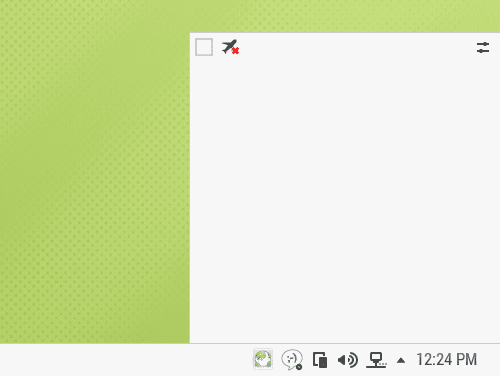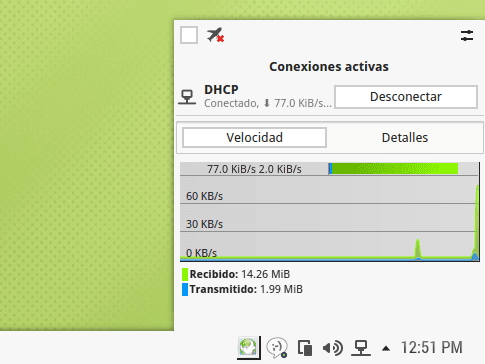Yesterday I decided to reinstall Debian on the work PC, in this case, Debian Testing as has always been my custom. Why have I made that decision? well because of Systemd, which in its eagerness to control everything now also wants to manage the cron, and therefore, the KDE Task Planner it no longer works because it uses crontab and not the Daemon's Systemd.
After so long using ArchlinuxThere are things that I have been leaving behind and of course, I had forgotten them. An example of this is what I want to comment on in this article.
After doing an installation with a Netinstall ISO, and after spending almost 20 minutes waiting (because APT is still slow, but slow) for all KDE, my applications and others to be installed, I decided to enter my session and despite the fact that I had a connection, and all the necessary packages installed, it was not managing it NetworkManager.
Those who use Debian they must know the cause daily. For those who do not use Debian and want to try this distro, what I will comment below should be taken into account, lest they go crazy.
Activating NetworkManager
The problem is simply that in order to do an installation through NETWORK, Debian configures its data using the file / etc / network / interfaces, which should have something like this inside:
# This file describes the network interfaces available on your system # and how to activate them. For more information, see interfaces (5). # The loopback network interface auto lo iface lo inet loopback # The primary network interface allow-hotplug eth0 iface eth0 inet dhcp
In this case, the last two lines specify that the connection is established (or established) through DHCP, and the solution would therefore be to simply comment on those last two lines, leaving the file in this way:
# This file describes the network interfaces available on your system # and how to activate them. For more information, see interfaces (5). # The loopback network interface auto lo iface lo inet loopback # The primary network interface # allow-hotplug eth0 # iface eth0 inet dhcp
But before restarting, we must also make sure that the file /etc/NetworkManager/NetworkManager.conf it looks like this:
[main] plugins = ifupdown, keyfile [ifupdown] managed = true
And with this we must be able to manage our networks using NetworkManager.
And that's it 😉


Good afternoon,
Thanks for the "tip", I wonder which KDE version is the one that appears in the image since I have never seen the details of the internet speed and which theme it uses that I liked a lot 🙂
Greetings.
That is the Applet that comes out in KDE 4.13 and higher. The theme I'm using is an imitation of KDE 5. Greetings
What amazes me is how well the KDE 5 theme mimics KDE 4.13.
Are you going back to Debian or is it just a passing adventure? I hope it comes first and I can regularly take advantage of these tricks, 🙂.
good tip until I get back to debian 🙂
for now I have no problems with ubuntu / mint 14.04 and the vendors amd / ati drivers
* blessed
I missed the "b"
Luckily I have the miracle of having PC's with Intel chipset.
And what advantages does NetworkManager have over wicd ..?
NetworkManager has better integration with both Gnome and KDE (speaking in terms of applets), apart from the fact that nm allows you to handle proxies, vpn, usb modems, ppp, things that wicd does not allow you to handle in the same software unit.
Still, I prefer wicd to handle a simple network either wired or WiFi, when using environments like XFCE or WMs.
That same. Also, I have become more used to NetworkManager than to Wicd.
I usually use wicd since it has an ncurses client, which with NetworkManager, without a graphical environment it is a mess to connect to a wifi network
@arkhan NetworkManager also has its interface in ncurses and the program in question is called nmtui, and it is quite easy to use, as well as having fewer dependencies than wicd-curses.
Excellent, since the day before I received an update on Debian Jessie in which the SysVinit has returned to me on my PC, which has XFCE by default.
Let's see, if this new whopping updates saves me the time of configuring the NetworkManager by hand, since the previous update deconfigured it in the process of replacing the SystemD with the SysVinit.
Isn't Debian Jessie supposed to already include Systemd? Or is the "adoption" not yet complete?
Systemd is working on debian, but there is some backwards compatibility ... You can call the old commands "service samba stop" ... they are not as "verbose" as before, but they do.
& if you'd better have lowered the ISO; pass it to a USB and install it directly?
I say I am half-desperate & network installations drive me crazy, I prefer to burn my ISO on DVD & to collect them before doing a network installation.
Saved.
There is no point in "burning" a DVD test, they make big fixes every week, and for example a beginning of the year ISO (sysvinit) would cause problems when updating today by systemd. Not to mention KDE that only a few months ago they had KDE 4.10 and today 4.14.
Good!
I have been a Debian user for about eight months. With all this mess that is arising around systemd I had thought about returning to sysvinit, at least until the waters calm down and see how systemd evolves. I thought that having xfce installed as a desktop environment would not have problems, but both network-manager and lightdm install systemd for me (I solve the latter by installing slim). My question is if there is any network manager that does not depend on systemd. I've looked for NetworkManager in apt-cache and it doesn't come up anywhere.
By the way, at the moment I do all these tests in a virtual machine. There I have no problems if the network-manager disappears, but if I had done it in the main system I would have been left without a network (at least that happened to me in the first desktop change tests I did). So I want to get everything tied down before I mess with my day-to-day system.
Regards!
Is it necessary to add the user to the netdev group? I did it and I have no problems
I am a new user in linux, could someone explain to me step by step what I should do? Yesterday I installed wifislax, but now the NetworkManager does not start, I can't even connect by ethernet cable. I would like to understand them but I cannot understand what they are talking about
what are the packages called to manage bondig team vpn, others in with gnome graphical network manager